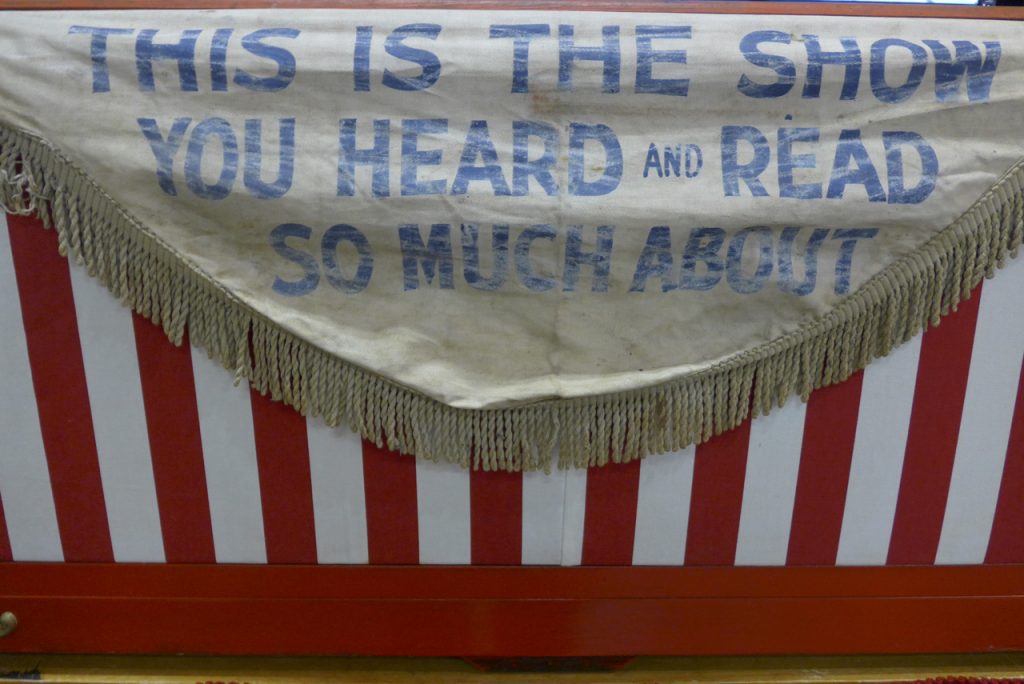As I recently took part of the two day “Conjuring Creativity” symposium/festival in Stockholm (organised by the dynamic duo of academic Dr Per Faxneld and artist Geraldine Hudson), I had the chance to ruminate and ponder about this kind of excellent opportunity to mix and match seemingly different worlds and approaches.
I showed Lunacy, the film I made in 2017 together with my wife Vanessa Sinclair, and I gave a talk on the Mega Golem as a philosophical-magical art project. But most of the time I sat by the Trapart book table, sold books and talked to people who drifted by in-between talks (ranging from subjects like Kenneth Anger, Hilma af Klint, women surrealists, the Cloud of Unknowing, and Occulture, to August Strindberg, paranormality, and more).
The venue, Fylkingen, is a classic place for experimental music and culture in Stockholm (and the world, actually) so that in some ways literally “set the stage” and the tone. Artists and curious creative people seemed to outnumber the academics. But everyone was part of everything and everyone seemed genuinely interested in learning more.
Vanessa (who held a cut-ups workshop on both days) and I have similar experiences from our own “Psychoanalysis, Art & the Occult” conference in London in 2016. This was also a transgressive/transcendental experience, as we had people from all these three disciplines/areas talking to each other. These are usually quite conservative disciplines on their own but our conference apparently heated up the rigidities of each so that some kind of merging could take place. “Conjuring Creativity” was in many ways like this too.
Newcomers stopped by the book table to ask me which issue of The Fenris Wolf they should begin with. Academics curiously flipped through my most recent book, Occulture: the unseen forces that drive culture forward, as they had heard about it in several of the lectures. (I even sold a few copies of my first novel, Mother, Have a Safe Trip, after having explained to the buyers that it’s an occult thrill-ride filled with sex, magic and psychedelics. What’s not to like?)
You can never avoid the clique-making inherent in social dynamics. But I thought at several times during this weekend that the phenomenon was unusually loose and relaxed. That is, of course, a very healthy thing. Young people can certainly benefit from the basic overviews of the academics. And academics can definitely profit from learning more about magical artistic practice, as that is essentially what they write about (in this distinct sphere of “Western Esotericism” anyway). Academic scholars simply have a lot to win by taking a look at the phenomenon they’re studying first hand. There is no major difference between the expressions and methods of Hilma af Klint and those of contemporary artists Christine Ödlund and Ectoplasm Girls (both performing on the first evening). There is no major difference between the expressions and methods of August Strindberg and those of myself. Et cetera. One side is historical and thereby up for post-mortem academic subjectivity, while the other is alive and eloquently defining itself in the vibrant present. It’s all there in the difference between written history and active history writing. The smart academics are now realising this and are leaving their own esoteric coteries to indulge in a world filled to the brim with both the magic of reality and the reality of magic.
And the vice versa aspects are equally valid. Where many of today’s young artists are driven by intuitive interest more than merely an intellectual one, they can absolutely profit from sharp, academic contextualisation. Why? Because history always repeats itself, as do most of its protagonists. As the veil covering magic (past, present and future) is now gradually being parted in our own considerably more permissible culture it’s easy to see that what many young intuitives are doing and creating is a carrying on in a millennia-old tradition, proudly holding on to the torch of Prometheus-Lucifer.
To see an academic environment that wants to be an active part of this enormous forcefield of creativity is very positive and healthy. As a joined force, magical art and academia can definitely pack some heavy illumination punches.
Conjuring Creativity, Fylkingen, Stockholm, April 28-29, 2018
Speakers: Dr Per Faxneld, Dr Henrik Johnsson, Dr Christian Giudice, Paula von Seth, Carl Abrahamsson, Dr Per Johansson, Madeleine Hatz, Dr Tessel Bauduin, Dr Victoria Ferentinou, Cavan McLaughlin, Dr Kasper Opstrup
Workshops: Vanessa Sinclair, Roberto Peyre, LaaRa Stinnerborn
Performances: Christine Ödlund, Ectoplasm Girls, Leif Elggren, Marja-Leena Sillanpää, Madeleine Aleman, Den Arkaiska Rösten, Antti Littmanen, Kristian Olsson







